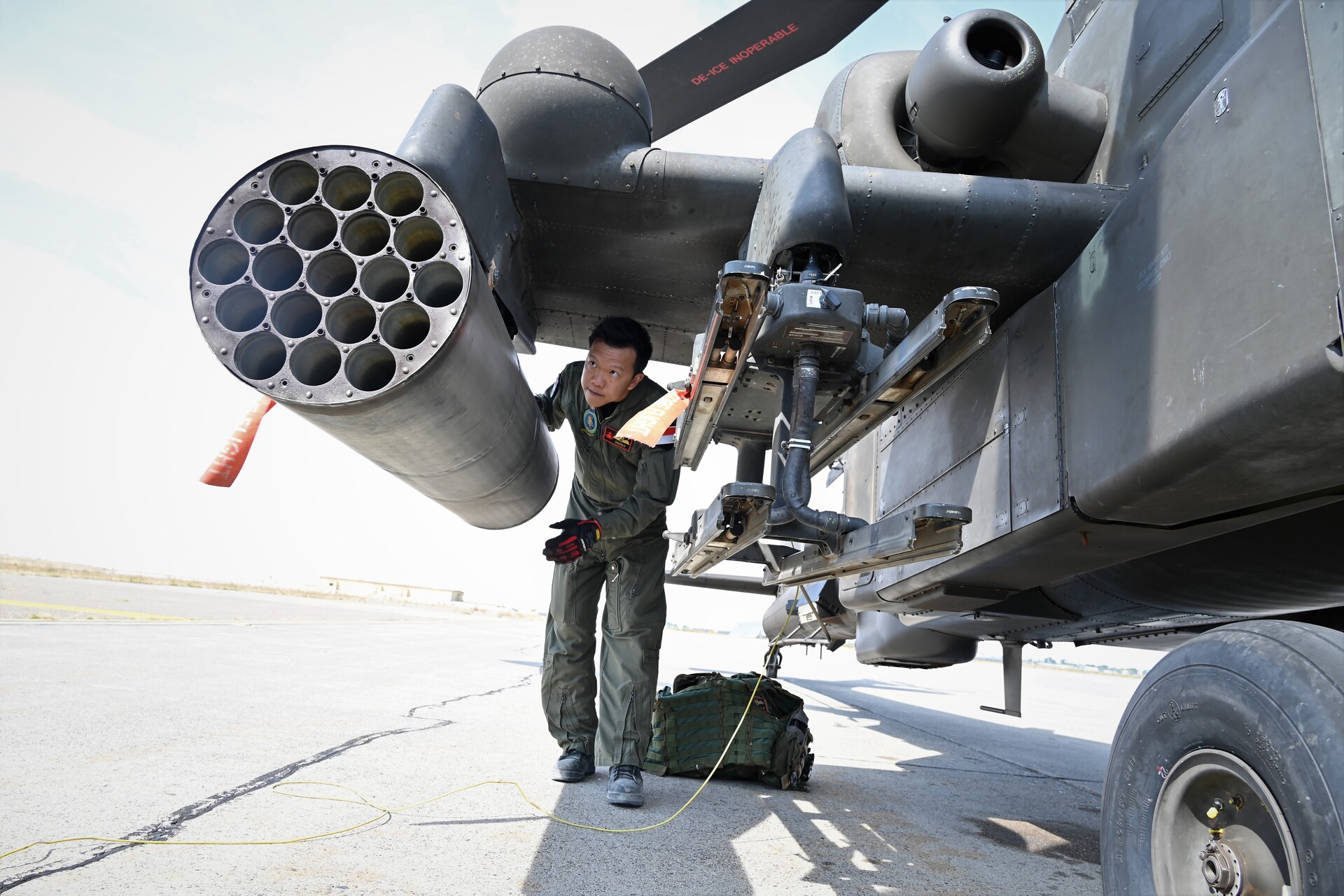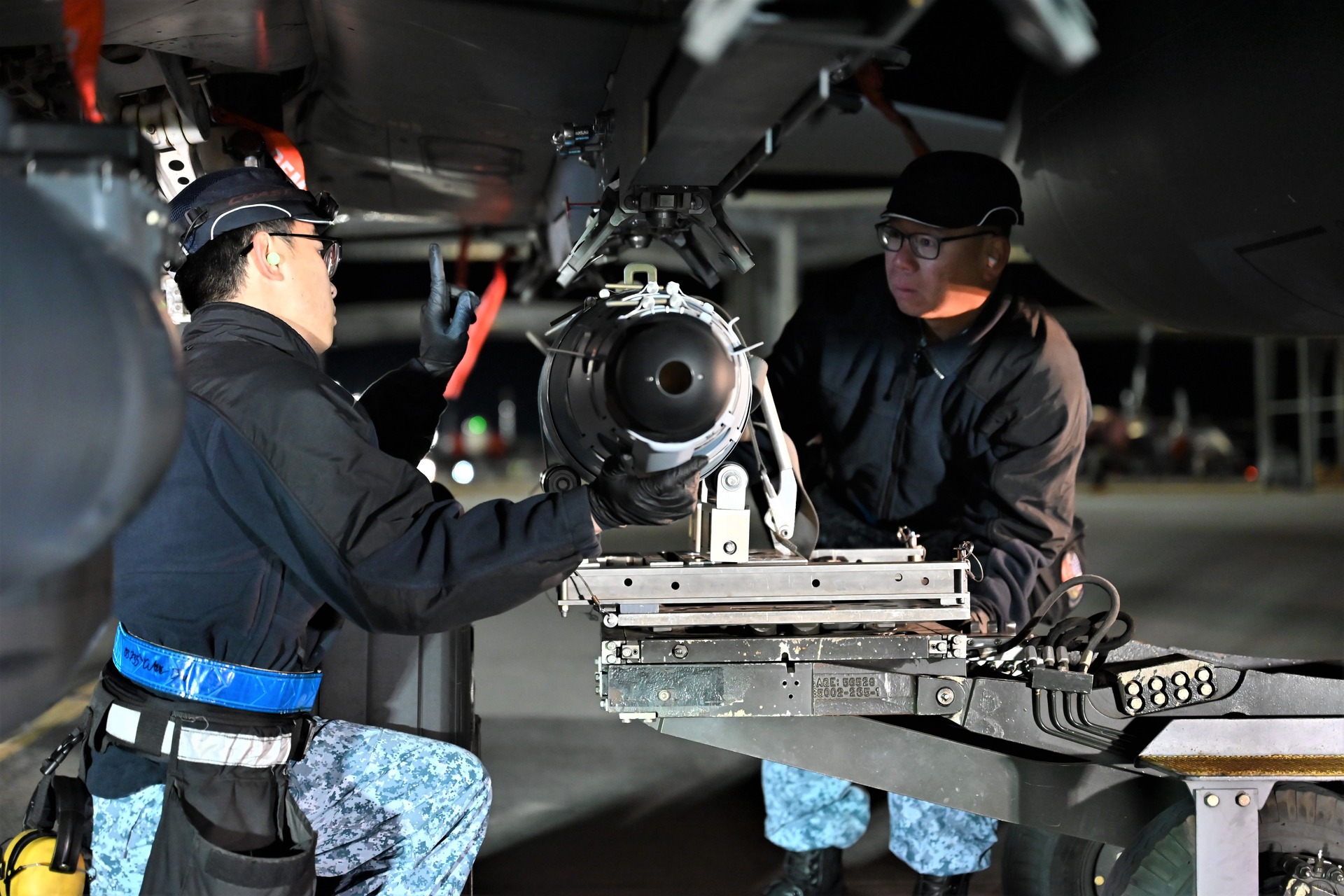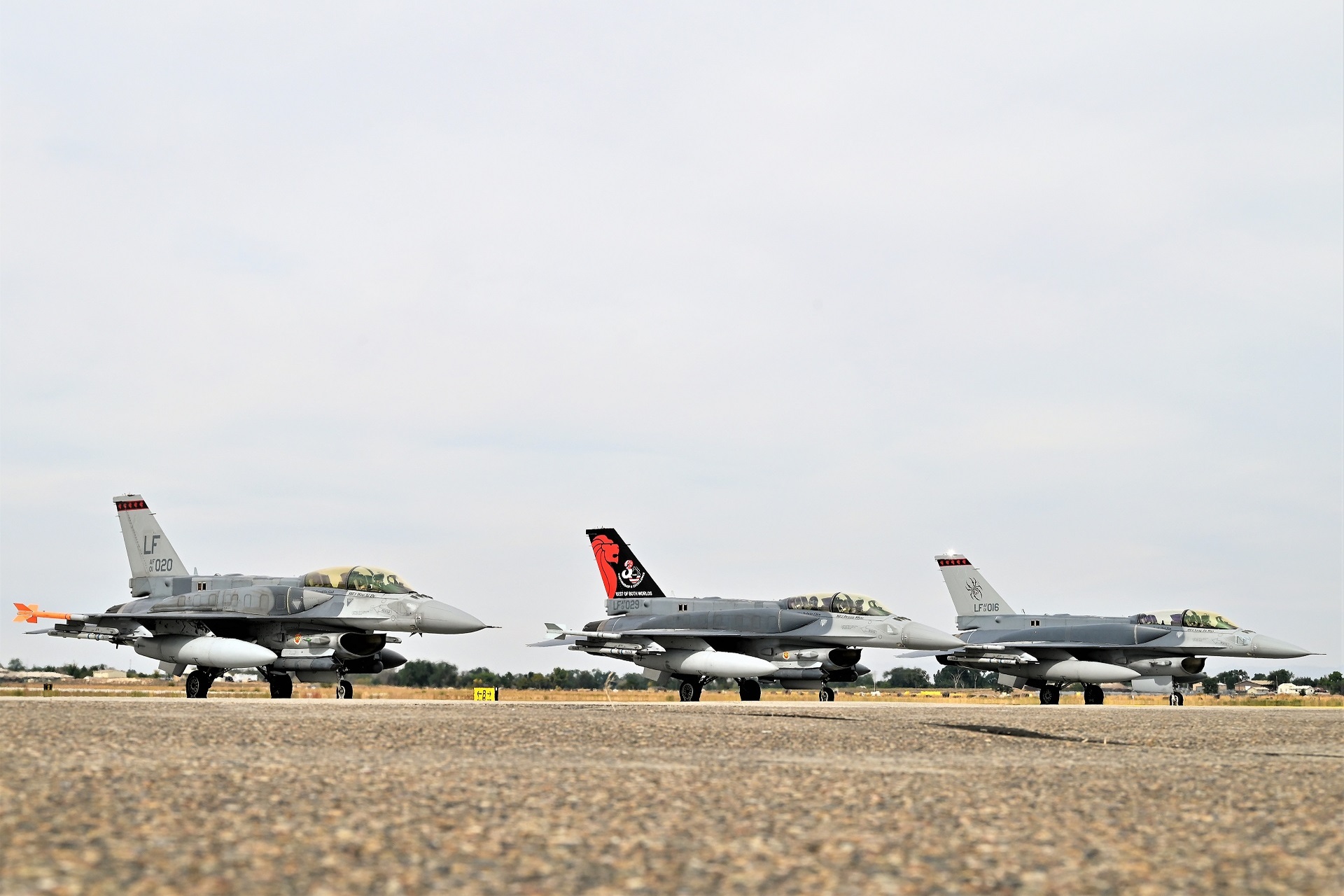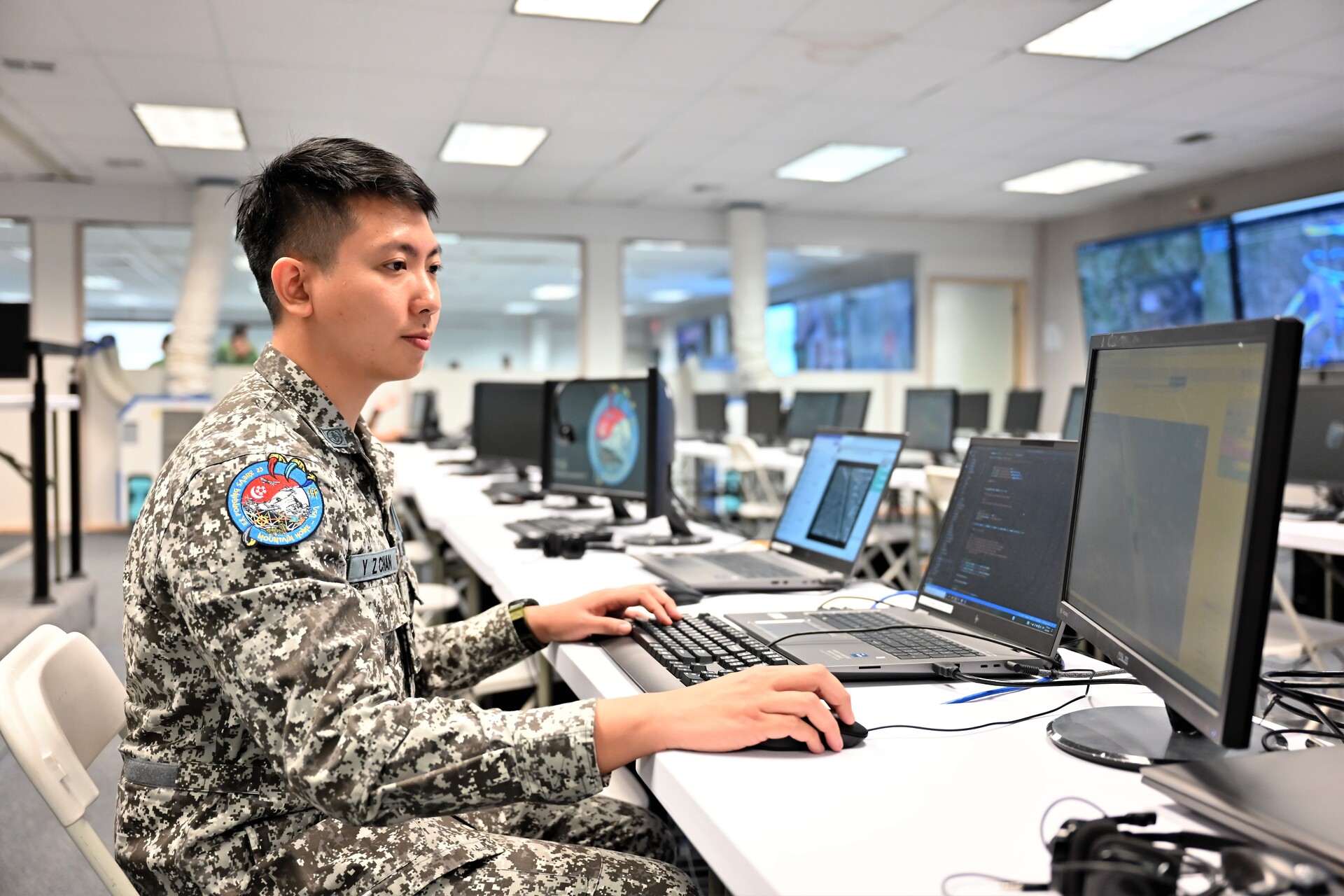OPS & TRAINING
Fighting smarter, harder at Exercise Forging Sabre
23 Sep 2023
It's an attack from all sides.

Coordinated multi-pronged attacks from land and air. A smart Command and Control Information System (CCIS) that enables commanders to make decisions quicker and more accurately.
These were the new features at Exercise Forging Sabre (XFS) 2023, the ninth edition of the Singapore Armed Forces' (SAF's) sense-and-strike exercise that brings together all the Services in a test of integration and coordination.
Held at Mountain Home Air Force Base in Mountain Home, Idaho in the United States, this year's exercise sees the biggest participation with about 1,100 personnel and a suite of sense and strike assets from the Republic of Singapore Air Force (RSAF) and Army.
This year also saw the inaugural participation of the Digital and Intelligence Service (DIS), the SAF's newest Service that safeguards the digital domain.




AH-64D pilot Major (MAJ) Joshua Yap was part of the Command Post in XFS 2021. Returning as an aircrew this year, he witnessed how the upgraded CCIS has evolved to enable the shooters to be more agile and flexible by quickly redeploying them to focus on more critical targets during a mission.
The 39-year-old, who is part of the Peace Vanguard Detachment in Tucson, Arizona, is looking forward to learning more and integrating better with the other shooters.
"We had an exercise where both the HIMARS and fighter jets were employing live munitions (on a target) in addition to the Apache. With a better understanding of how they operate and tight integration, we were able to achieve munition-on-target within a short span of time."


Corporal Aide Alfian Bin Abdul Rahman is a HIMARS operator who drives and maintains the asset. And it has been an eye-opening experience carrying out operations that would not be possible in Singapore.
Getting ready to operate in an unfamiliar environment was no easy task, said the 20-year-old NSF, and progressive training began early on.
"Before coming here, I spent many months preparing with my battery mates by going through the procedures. We began by talking through what we're supposed to do," he explained.
"We then moved on to practical sessions where we rehearsed our drills over and over again – this was to make sure we had our fundamentals in place. Once we achieved this, we became more confident of operating in a new environment and terrain."




XFS is a good opportunity for the F-15SG to exercise with the various assets, said pilot Lieutenant Colonel Lim Jian Yang (in front seat).
For example, the fighter jet works with the Heron 1 in cooperative lasing, where the UAVs use lasers to guide the jet's bombs onto targets, and the Multi-Role Tanker Transport to increase the jet's endurance. He can also carry out coordinated attacks with strikers such as the HIMARS, Apaches and F-16C/D+ aircraft.
This year, the Peace Carvin V Detachment Commander is looking forward to working alongside the upgraded F-16s: "This year, our focus is on coordinated joint firing and working with the upgraded CCIS. We want to deliver firepower with the closest coordination and in the shortest time."
"The upgraded F-16s, with their additional sensors, will help us to locate our target earlier. We will also try to impact bombs closely together with the HIMARS."


This is MAJ Ooi Liwen's third time at XFS, but her first with the Heron 1 detachment. Sharing the runway at Mountain Home Air Force Base with many other aircraft means that the team must coordinate carefully to ensure that operations are carried out safely, said the 29-year old Heron 1 pilot.
This time, she will be working with the RSAF's new imagery intelligence dissemination system, which allows video footage from the Heron 1 to be piped to ground troops such as STORM operators, giving them better situational awareness of the battlefield.

MAJ Ooi (right) is also looking forward to flying the Heron 1 in a new multiple-tier UAV concept, where the Heron 1 will perform wide-area sensing at the highest tier.
Smaller UAVs in the middle tier can be cued to provide persistent tracking on the targets. Finally, micro-mini drone swarms at the lowest tier search for targets at a close range.

As an Air Imagery Intelligence Expert, Military Expert (ME) 2 Samraj (left) acts as the bridge between the UAV pilot and Command Post to relay the commanders' requirements to the operators and guide them towards their targets.
Working with the upgraded CCIS has made the sense-strike process more seamless, said the 28-year-old. "The CCIS enables us to detect targets faster, and the Intelligence Analysis System allows us to send sensor cues from the Command Post to (the UAV operators at) the ground control station."
"With the full-motion video from the Heron 1 incorporated with the CCIS, we can detect targets automatically. This shortens the sense-strike process."

Battle staff in the Command Post working hard to sense-make the data coming in from the different sensors, so that commanders (standing, top left) can make informed and accurate decisions in the deployment of firepower.
The CCIS, the "brain" of the Command Post, is making its second appearance at the exercise – this time with many upgraded features that tighten communication, enhance coordination and expedite the decision-making process for all Command Post personnel.

This is the first time that the DIS is participating in the exercise. This year, the DIS co-developed the Computer Vision (CV) algorithm, together with the Defence Technology Community.
A new upgrade to the CCIS, CV allows the CCIS' Intelligence Analysis System to automatically detect and classify objects from Heron 1 video feed.
Captain Dion Michael Chan is the Section Head of CV Development Ops. With the intensity of the missions carried out at the exercise, he has been able to make use of the large volume of data to rapidly improve the CV models, which aid in detecting and classifying objects of interest.
"We constantly monitor the performance of the CV models, and every day we take the new information and use it to refine the model to make it better for the next day," said the 32-year-old.
ALSO READ IN OPS & TRAINING

Exercise Wallaby 2025: To see better, shoot faster
31 Oct 2025
The SAF focuses on complex strike missions and multi-domain integration in Exercise Wallaby 2025, the 35th edition of its largest unilateral overseas exercise.

Ex Wallaby 25 – Greater Integration and Complexity
25 Oct 2025
The 35th edition of the SAF’s largest unilateral overseas exercise is an opportunity for expanded scale and deeper integration towards an effective, networked fighting force.

Ex Forging Sabre ramps up use of unmanned assets in integrated strike operations
12 Sep 2025
In this 10th edition of Exercise Forging Sabre, the SAF sharpened its cutting edge for the dynamic modern battlefield, with expanded integration between manned and unmanned platforms.


